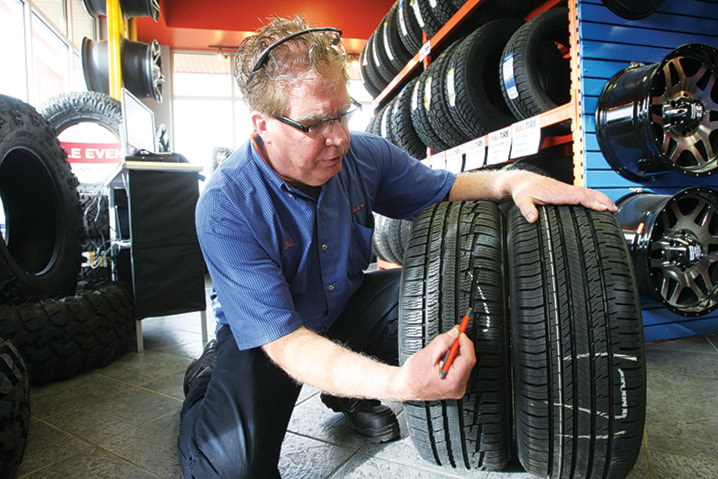When it comes to tires, “all-season” doesn’t necessarily include winter.
That’s the message Bill Gardiner is driving home during a national tour promoting the advantages of all-weather tires. The resident mechanic on TSN’s long-running TV program Motoring says all-season tires can come up short when the temperature dips below 7C.
“The all-season is fine for spring-summer-fall,” said Gardiner, who was in Red Deer on Tuesday.
“It gives you good performance, but it doesn’t give you good performance in the winter time. Anytime the average ambient drops to about 7C, the grip of the all-season tire is greatly diminished.
“Also the all-season tire doesn’t get slush and snow out of the contact patch as well as a winter or an all-weather tire.”
That can mean reduced performance, including longer stopping distances, when the weather gets cold.
Kal Tire recruited Gardiner to raise public awareness about the importance of choosing the right tires for winter use, with the celebrity mechanic speaking to journalists at 11 centres between British Columbia and Ontario. The Canadian tire company mounted another all-weather tire campaign last fall, but felt the message would resonate better coming from Gardiner, said Tracy Cobb, Kal Tire’s director of communications.
Gardiner, who owns a vehicle repair business in Southern Ontario, said he’s been recommending all-weather tires to many of his customers since 2008.
“I was sold long before this.”
There’s still a place for traditional winter tires on many drivers’ vehicles, he acknowledged. Motorists who do a lot of extreme winter driving — such as those who frequent the mountains or spend a great deal of time on poorly maintained roads — might be better off alternating between winter tires and all-season tires.
But many lack the storage space for two sets of tires, or drive infrequently during the winter months, said Cobb.
Switching between winter and all-season tires can also be costly, said Gardiner, pointing to the expense of buying a second set of rims or paying to have two sets of tires transferred on one set of rims. It can also mean paying for a second set of tire pressure monitoring sensors.
Another drawback of winter tires is that they’re not designed for use in ambient temperatures above 7C, and can wear quickly in warm conditions.
“With the all-weather, the tread compound is optimized for good performance above and below 7C,” said Gardiner.
The quality of all-weather tires has improved since they first arrived in Canada in 2000, said Gardiner, with their rolling resistance now comparable to that of all-season tires.
“It’s not the one and only answer for everybody, but it’s a great answer for anybody who was previously buying all-season tires.”
hrichards@www.reddeeradvocate.com
